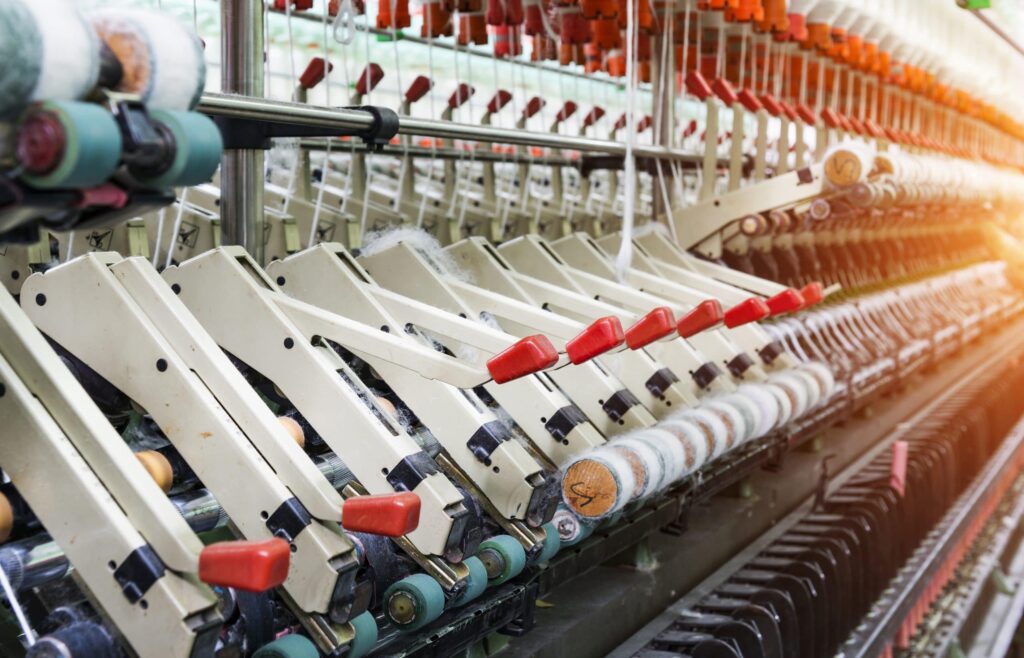Introduction:
The textile industry has played a significant role in revolutionizing the fashion industry. From the production of raw materials to the creation of finished garments, the textile industry has been a driving force behind the evolution of fashion. The introduction of new and innovative fabrics, such as polyester and spandex, has allowed designers to create clothing that is not only aesthetically pleasing but also comfortable and functional. Technological advancements in textile production have also enabled manufacturers to produce textiles faster, more efficiently, and with greater precision.
Moreover, the textile industry has also had a significant impact on the global economy, providing jobs and economic opportunities for people around the world. It has also spurred the growth of related industries, such as the dyeing, printing, and finishing of textiles. The textile industry has brought about a revolution in the fashion industry, transforming the way clothing is designed, produced, and marketed. Its impact on the global economy and society as a whole cannot be overstated, and it will undoubtedly continue to shape the fashion industry for years to come. T & A textiles & hosiery is one of the leading providers of wholesale textiles and hosiery. They are a respectable business with an extensive track record of providing long-lasting, excellent home furniture at cost-effective prices.
Textiles As A Fundamental Part Of the Fashion Industry:
The textile industry has played a pivotal role in the fashion industry for centuries. With technological advancements and changing consumer demands, the textile industry has transformed and revolutionized the fashion industry. Today, textiles have become a fundamental part of the fashion industry, influencing every aspect of the design, production, and marketing of clothing.
From traditional hand-woven fabrics to modern-day synthetic fibers, the textile industry has evolved significantly. The introduction of new materials and techniques has brought about a revolution in the fashion industry. Today, designers have access to a wide range of materials, colors, and patterns, allowing them to create unique and innovative designs.
Fashion Industry:
The textile industry’s contribution to the fashion industry can be traced back to the Industrial Revolution. During this period, textiles were produced on a large scale using machines, which significantly reduced production time and costs. The production of textiles became faster and more efficient, leading to the mass production of clothing. This marked the beginning of the fashion industry as we know it today.
Introduction To Synthetic Fibers:
One of the most significant contributions of the textile industry to fashion is the introduction of synthetic fibers. Synthetic fibers such as nylon, polyester, and acrylic were first introduced in the 1930s and quickly gained popularity due to their durability, affordability, and versatility. These fibers enabled the production of a wide range of fabrics, such as polyester crepe, nylon taffeta, and acrylic knits. These materials offered designers more flexibility in their designs and allowed for the production of clothing at a lower cost.
Sustainable And Eco-Friendly Fabrics:
The textile industry has also revolutionized the fashion industry by introducing sustainable and eco-friendly fabrics. With the growing concern for the environment, the fashion industry has shifted towards sustainable and ethical production practices. The textile industry has responded by introducing fabrics made from recycled materials, such as plastic bottles and old clothing. Sustainable materials such as bamboo, hemp, and organic cotton have also gained popularity due to their environmentally friendly properties.
Textile Industries In Printing And Dyeing:
The textile industry has also played a crucial role in the evolution of printing and dyeing techniques. The introduction of digital printing has allowed designers to create intricate designs and patterns, leading to a new wave of creativity in the fashion industry. New dyeing techniques such as sublimation printing have also gained popularity due to their ability to produce high-quality prints on a wide range of fabrics.
Specialized Fabrics Which Has Revolutionized the Fashion Industry:
The textile industry has also enabled the production of specialized fabrics designed for specific functions. For example, fabrics with moisture-wicking properties are popular in sports clothing, while fabrics with UV protection are popular in swimwear. These specialized fabrics have revolutionized the fashion industry, enabling designers to create clothing that is both functional and fashionable.
Textile Industry In The Globalization Of The Fashion Industry:
The textile industry has also played a crucial role in the globalization of the fashion industry. With the development of international trade, designers have access to a wide range of fabrics and materials from around the world. This has led to a fusion of cultures and styles, resulting in a diverse range of fashion trends.
Conclusion:
In conclusion, the textile industry has revolutionized the fashion industry in numerous ways. From the introduction of synthetic fibers to the development of sustainable fabrics, the textile industry has enabled designers to create unique and innovative designs. The evolution of printing and dyeing techniques and the development of specialized fabrics have also played a significant role in the fashion industry’s growth. With technological advancements and changing consumer demands, the textile industry will continue to shape and revolutionize the fashion industry for years to come.
You may also like
-
Classified Websites in India: A Digital Marketplace for All
-
Why Sod Installation is the Quickest Way to a Beautiful Lawn?
-
The Role of Statutes and Case Law in Policy Limit Access
-
Setting Up a Home Theater with LG CineBeam Q The Ultimate Guide
-
Business Listing Sites in USA: 2025 Guide for Better Online Visibility

